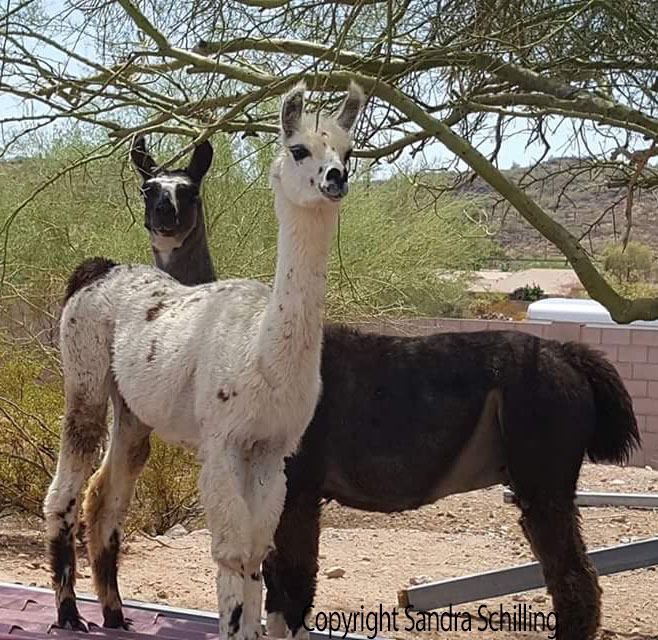Shade and Water for Llamas and Alpacas

Determination Of the Effect of Shade And Hydrotherapy Treatment On Thermoregulation In Llamas And Alpacas
P. Ramsey, D. Linden, and D. E. Anderson, Dept. of Veterinary Clinical Sciences
Alpacas and llamas are native to the Andes Mountains residing at an altitude of 4,000-14,000 feet and their thermoregulation mechanisms have become adapted to this mild environment. These animals often suffer heat stress during the months of summer in North America.
Effective shade and ventilation are critical to the prevention of heat stress. However, many owners use intermittent hydrotherapy as a preventative tool during excessively hot days. We hypothesized that a single administration of water would have little effect on body temperature and that there would be no difference between application to the whole body and the thermal window (ventral abdomen, inner thighs, and perineum). This study was designed to determine the interaction of shade and hydrotherapy on body temperature regulation and thermal distribution.
Eighteen llamas and alpacas were divided into three treatment groups and two replicates (shade, sun): Group 1- no hydrotherapy, Group 2- hydrotherapy on thermal window only, and Group 3- whole body hydrotherapy. Replicate 1: all three groups were placed in the sun without any shade for two hours. Temperatures were recorded at 0, 15, 30, 45, 60, 90, and 120 minutes rectally and at three different surface sites (neck, back, and tail base). Skin surface temperatures were determined using laser surface thermometer. Replicate 2 (24 hours after replicate 1)- fully shaded barn and no box fan ventilation, (all assignments-same). With the exception of the rectal temperatures, there was a slight decrease in temperature at 30 minutes after hydrotherapy. Unfortunately, this was short-lived and the temperature of all the treatment groups rose as the study went on.
Ultimately, there was no difference between the whole body versus thermal window hydrotherapy treatment groups or the no hydrotherapy group. However, llamas and alpacas in shade had lower rectal and surface temperatures compared with those in full sunlight.
David E Anderson, DVM, MS
College of Veterinary Medicine
Ohio State University
March 12, 2003
Like this article? Become a RMLA Member today!

